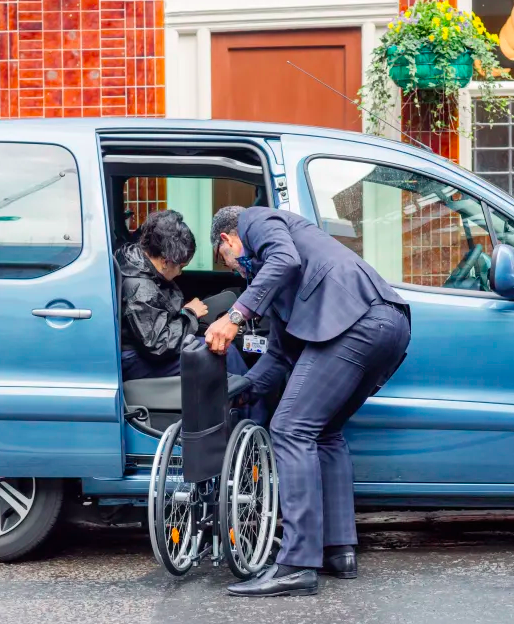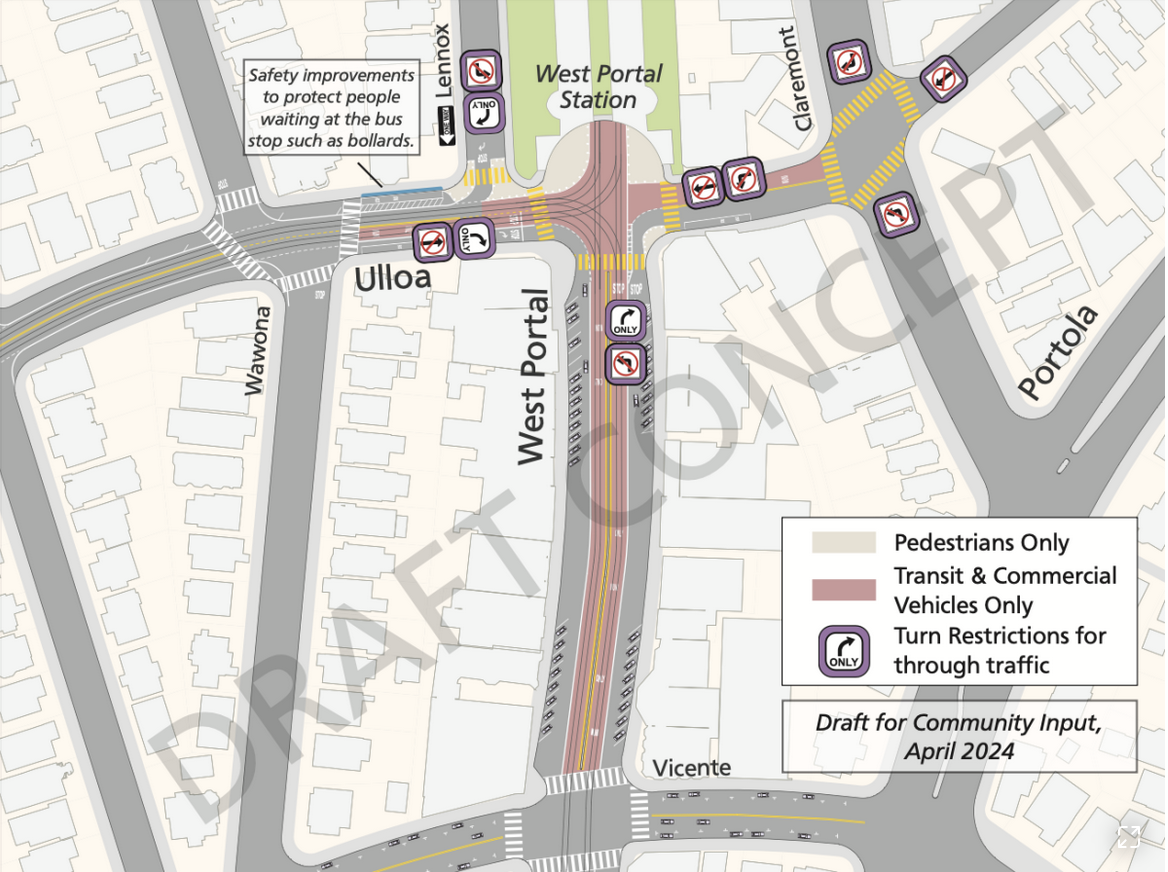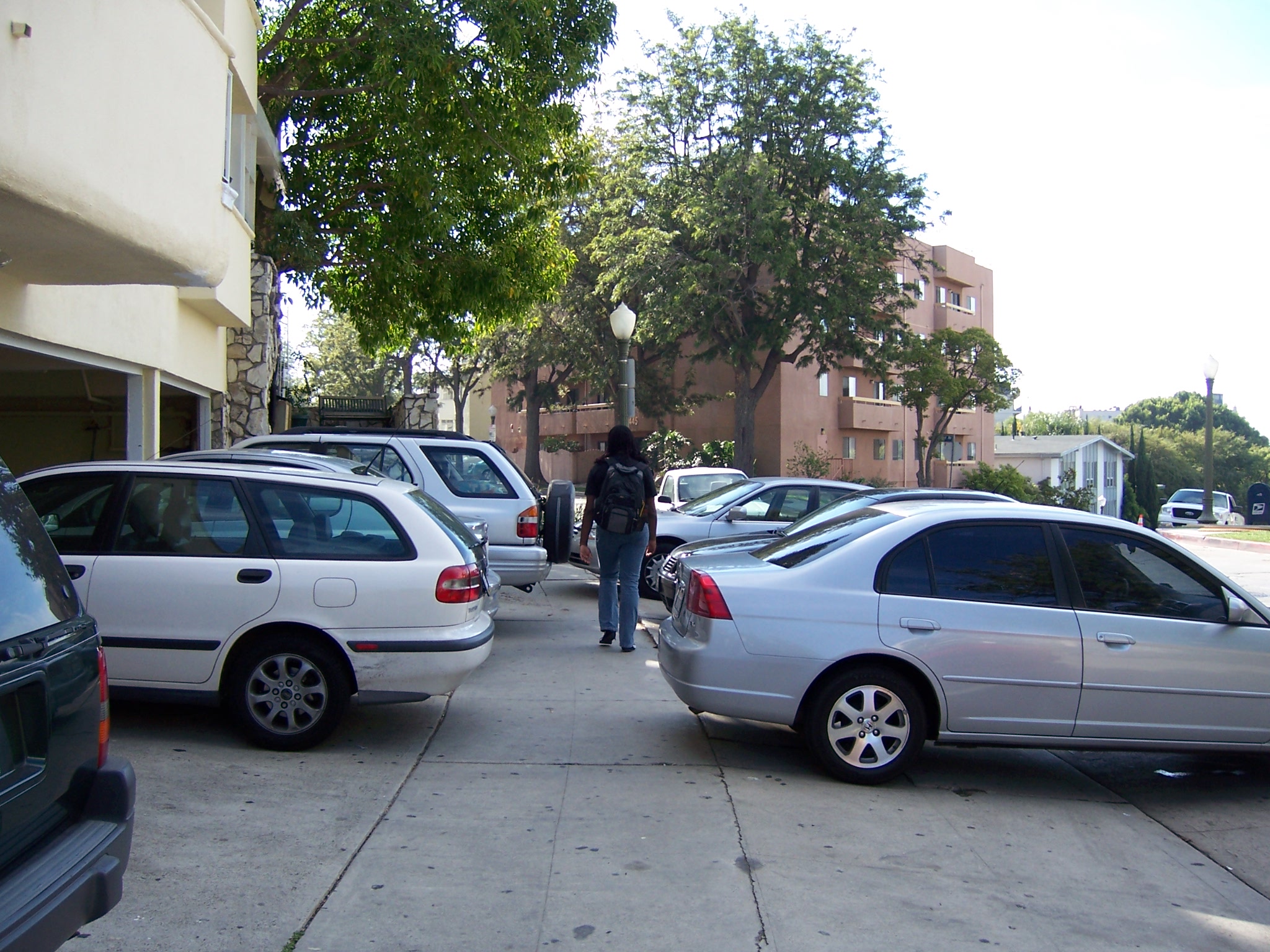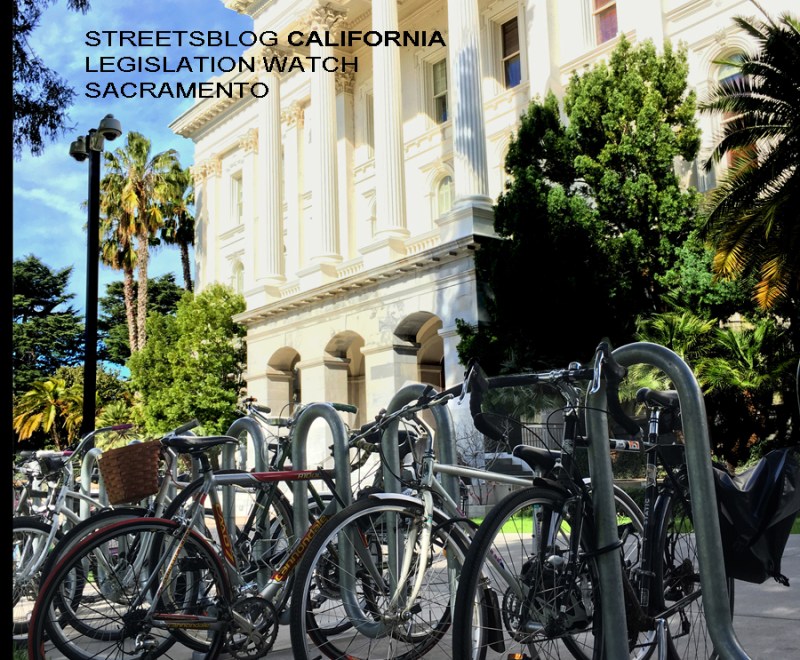Regulators Make Headway on Wheelchair Access for Ride-Hail
1:00 PM PDT on April 9, 2021

Image via Uber
The state of California just took an important step forward to improve accessibility for users of wheelchairs and medical scooters on ride-hailing apps like Uber, Lyft, or HopSkipDrive. The California Public Utilities Commission (CPUC) is working to implement a 2018 bill (S.B. 1376) that requires ride-hailing companies to make rides on their apps more readily available to these riders. The bill instructed the CPUC to create a new “Access for All Fund” that would be distributed to all ride-hail companies to help them make necessary investments to provide wheelchair-accessible vehicles (WAVs).
The CPUC is responsible for regulating commercial service vehicles, including ride-hailing companies, limos, and employer-provided shuttles. In June 2019, the CPUC approved a fee of ten cents per ride-hailing trip to support the Access for All Fund. A more recent CPUC decision, made in March, addressed several outstanding key issues, as outlined below.
Discounts for Good Behavior: The CPUC is offering ride-hailing companies reductions in fees they will pay into the Access for All Fund in exchange for demonstrating an improved level of service for people who need WAVs. This has invited debate about the standards for improvement that would allow companies to qualify for fee reductions. The CPUC has said that in order for ride-hailing companies to be considered for these incentives, they must provide riders who need wheelchair access with progressively shorter wait times and make more WAVs and qualified drivers available over time. They also must show that they are training more WAV drivers and inspecting the vehicles regularly. Ultimately, the CPUC decided that ride-hailing companies who want to reduce the fees they pay into the Access for All Fund must show more WAV trips from one quarter to the next, but it did not set a baseline level or a specific number by which companies will need to increase access; they simply need to do better by any amount.
Financial Assistance Available, Strings Attached: The CPUC has offered ride-hailing companies more money from the Access for All Fund to further improve WAV services under certain conditions. In its March decision, the CPUC decided that, to qualify for extra money, ride-hailing companies must both meet the higher standards of service that qualify them for exemptions on fees and must be using the fees they collect from riders to improve WAV services further. Also, ride-hailing companies large and small can apply for money from the Access for All Fund even if they don’t yet have WAV services in a given area, and it is considering creating new rules for smaller companies (going beyond just Uber and Lyft).
Accessibility Narrowly Defined: In the March decision, the CPUC decided that consideration of WAVs shouldn’t exclude the needs of people with other disabilities, such as vision impairments, but it would leave further discussion of those issues to the future. Consistent with existing laws, it defined wheelchair-accessible vehicles narrowly, as having a “ramp or lift.”
We believe these decisions are a step in the right direction towards making it easier for people in wheelchairs or medical scooters to use ride-hailing services. We also think that there are areas where the CPUC could have been more clear, as we explain below.
Trip Completion Standards
The CPUC could have set more ambitious WAV trip completion standards for ride-hailing companies. The CPUC is requiring companies to increase the number of total completed WAV trips - meaning trips booked and delivered. Not all requested trips are completed; for example, if there is no wheelchair-accessible vehicle available a trip request could remain incomplete. So more completed trips is a good thing.
But if the industry witnesses a large growth in total trips this could in principle still result in a decreased percentage of completed WAV trips (out of total trips). To achieve equitable service, it should one day be as easy to get a WAV ride after booking one as it is to get a non-WAV ride after booking one. As a hypothetical example, if for every 100 people who request non-WAV trips, 95 of those people actually complete non-WAV rides, then for 100 people who request WAV trips, 95 of those people should also actually complete WAV rides (instead of experiencing cancelations). Service should be equitable in this way even if the total number of non-WAV trips is much bigger than the total number of WAV trips.
This of course can’t happen overnight, especially in areas where ride-hailing companies don’t have sufficient WAVs in service. However, there should be standards specifically setting an initial minimum percentage of completed WAV trips, and defining how this percentage should increase with each passing year, instead of accepting any percentage or an absolute increase (no matter how small). These standards should be developed after an initial period of research to determine what is feasible. Disability advocacy groups like the Disability Rights Education & Defense Fund (DREDF) and public transit agencies like the SFMTA and SFCTA proposed this type of proportional metric, but the CPUC ultimately decided to pursue the absolute trip completion metric.
Small Companies and Driverless Companies
The needs of smaller ride-hailing companies must be carefully considered, including whether to grant extra money to small companies that might have a harder time providing wheelchair-accessible vehicles. This discussion relates to another recent CPUC Decision from November 2020 about the deployment of driverless vehicles for commercial service. Some driverless companies might qualify as small ride-hailing companies. There are seven companies currently licensed to pilot driverless passenger service, but none who have fully deployed yet. While the most active driverless companies are driving hundreds of thousands of miles each year, it is not clear how fast these companies - or the dozens of other companies testing driverless vehicles - will scale up their fleets. Very few are testing driverless wheelchair-accessible vehicles.
Given these market uncertainties, questions remain about how to ensure that driverless vehicles are accessible to people in wheelchairs and with other disabilities. The CPUC has yet to come to a decisive conclusion about how legal obligations for current ride-hailing companies will affect future driverless vehicle companies. The CPUC should make this clearer going forward.
Consideration of Other Disabilities
The focus of this decision on wheelchair access should not exclude people with other disabilities, like vision or hearing impairment. Recent research (including several studies led by Robin N. Brewer, researchers at other universities, and analysts at the SFMTA) has shown that people with vision and other disabilities do use ride-hailing services fairly often, even without readily available WAVs. However, the CPUC decision could have been bolstered in two ways.
Primarily, the CPUC has defined a wheelchair accessible vehicle as having a “ramp or lift.” While consistent with existing laws, this definition might be too narrow, focusing on existing technologies rather than considering broader outcomes for riders in wheelchairs or medical scooters. As an example, some bus rapid transit systems in the U.S. use level boarding, including the CTFastrak in Connecticut and the Cleveland HealthLine in Ohio, instead of conventional ramps or lifts.
While we are not aware of any current ride-hail vehicles in the U.S. that offer level boarding, partnerships between ride-hailing companies or driverless service vehicle companies and public transit agencies could lead to innovative solutions combining vehicles and infrastructure - yet the CPUC’s current narrow definition would restrict the eligibility of such partnerships for fee breaks.
Lastly, the CPUC should take advantage of the consensus about the urgent needs of people with other disabilities and more consistently define the term “accessibility.” This will make new regulations clearer not only for conventional ride-hailing companies but also for future driverless vehicle operators. The CPUC acknowledged that more work needs to be done on this, so it should act now.
In conclusion, we applaud CPUC for tackling this critical and challenging issue. Considering the issues raised here will allow California to better address the mobility needs of people with all physical, sensory, and cognitive disabilities.
Prashanth Venkataram is a postdoctoral researchers at the UC Davis Institute of Transportation Studies and Mollie D’Agostino is the Policy Director of UC Davis’ 3 Revolutions Future Mobility Program.
Streetsblog California editor Melanie Curry has been thinking about transportation, and how to improve conditions for bicyclists, ever since commuting to school by bike long before bike lanes were a thing. She was Managing Editor at the East Bay Express, editor of Access Magazine for the University of California Transportation Center, and earned her Masters in City Planning from UC Berkeley.
Stay in touch
Sign up for our free newsletter
More from Streetsblog California
Automated Enforcement Coming Soon to a Bus Lane Near You
Metro is already installing on-bus cameras. Soon comes testing, outreach, then warning tickets.
Friday’s Headlines
SF plans street redesign at crash site; Santa Cruz commission still supports plan to have both trail and rail; State budget includes subsidies for fossil fuel industry; Unhoused camping; More
Thursday’s Headlines
CA youth speak out on climate: How LA Metro plans to spend $ from canceled 710 freeway; Watch out, illegal SF parkers, tickets are coming; More
Legislators Tackle AV, School Zone Safety
Are AVs freight trucks ready to be deployed on California roads with no one in them?
Metro Looks to Approve Torrance C Line Extension Alignment
Selecting the relatively low-cost hybrid alternative should help the oft-delayed South Bay C Line extension move a step closer to reality




